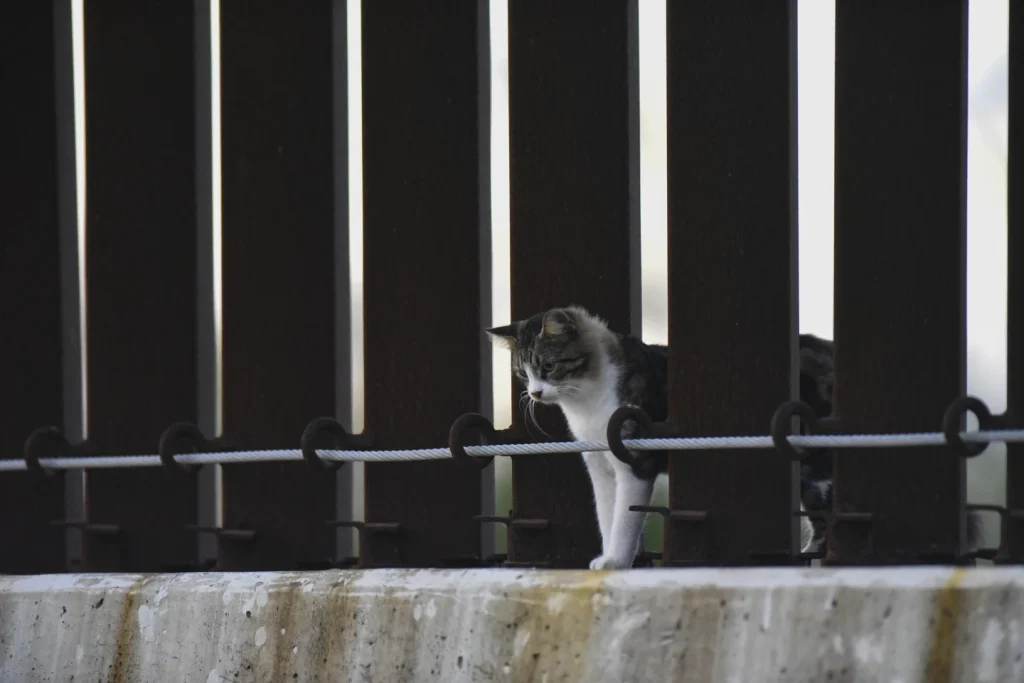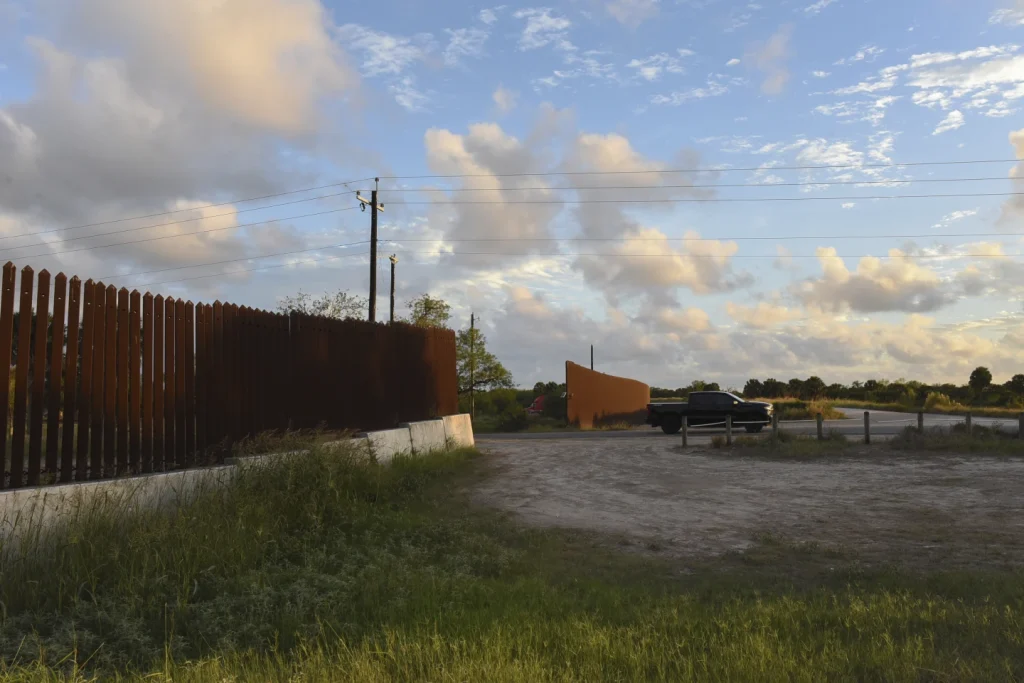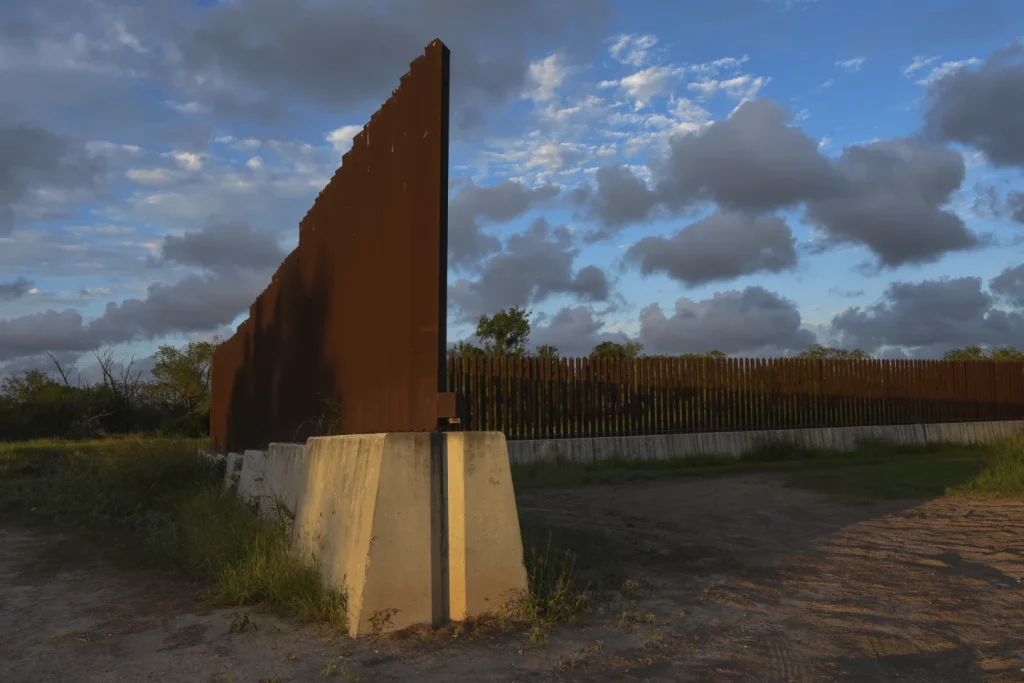The decision by the Biden administration to construct new barriers along the U.S.-Mexico border in South Texas has sparked controversy and debate among various stakeholders.
The proposed “movable” design has raised concerns among environmentalists who fear the potential impact on the local ecosystem and wildlife.
At the same time, advocates of stronger border enforcement have expressed frustration with what they perceive as a compromise in the administration’s approach to securing the border.
The plans for nearly 20 miles of new barrier in Starr County were met with public scrutiny when the federal government solicited input from the community in September.
Subsequently, the administration’s decision to waive 26 federal laws protecting the environment and certain species in order to expedite the construction process has only added fuel to the ongoing debate.
The clash between environmental conservation and border security highlights the complex and contentious nature of immigration policy in the United States.
As the administration moves forward with its plans, it will be crucial to carefully consider the potential consequences and seek a balanced approach that addresses the concerns of all stakeholders involved.
It is evident that the United States Border Patrol did not request or advocate for a downgraded border wall. This statement from Rodney Scott, a former U.S. Border Patrol chief, sheds light on the fact that the agency responsible for safeguarding the nation’s borders did not support the implementation of a subpar barrier.
This raises questions about the decision-making process and the factors that led to the construction of a wall that did not meet the standards and requirements set forth by the Border Patrol.
It also highlights the importance of consulting and involving the relevant authorities and experts in the planning and execution of such crucial infrastructure projects.
The revelation from Scott underscores the need for transparency and accountability in the decision-making processes that impact national security and immigration control.
It also emphasizes the significance of ensuring that the resources allocated for border security are utilized effectively and in accordance with the recommendations and expertise of the agencies tasked with protecting the borders.
This statement from a former Border Patrol chief serves as a reminder of the importance of collaboration and consultation with the relevant stakeholders in matters of national security and border control.
Despite President Joe Biden’s campaign promise to not build more wall, construction is still moving forward at the nation’s southern border.
This comes at a time of increasing migration from Latin America and other parts of the world, as individuals seek asylum in the United States.

The government’s budget year that ended on September 30 saw illegal crossings top 2 million for the second year in a row. This situation presents a significant challenge for the Biden administration as it seeks to address the issue of immigration while also adhering to its campaign promises.
The construction of the wall and the influx of migrants are complex issues that require careful consideration and strategic planning to find a balanced and effective solution.
It remains to be seen how the administration will navigate this challenging situation and work towards a sustainable and humane immigration policy.
The issue of border security has been a contentious topic, with differing opinions from various groups. Individuals like Scott, who advocate for increased border security, express concerns that the barriers currently in place are not strong enough to effectively prevent illegal crossings.
On the other hand, environmentalists argue that the design of these barriers poses a significant threat to animal habitats, which raises questions about the overall impact of such security measures.
President Biden has defended the administration’s decision to continue with the construction of these barriers, citing the necessity to use the funding allocated during the Trump era.
According to the law, this funding must be utilized as approved, with the construction of the new barriers expected to be completed by 2023.
It is worth noting that the majority of the existing barriers along the border were constructed within the last two decades, during the administrations of both President Trump and President Bush.
These barriers consist of various designs, including Normandy-style fencing and bollard-style fencing, each serving as a physical deterrent to illegal border crossings.
The debate surrounding border security and the construction of barriers continues to be a complex and multifaceted issue, with a range of perspectives and considerations to be taken into account.
The construction of Biden’s barrier, which is intended to replace Trump’s wall, is expected to be significantly shorter in height, measuring between 18 to 30 feet, compared to the towering 18 to 30-foot concrete-filled steel bollard panels of the previous administration’s wall.
This reduction in height may be seen as a symbolic shift in approach, signaling a departure from the aggressive and divisive immigration policies of the past.
Additionally, there is speculation that Biden’s barrier may be designed to be temporary, suggesting a more flexible and adaptable strategy in addressing border security and immigration issues.
This potential temporary nature of the barrier could reflect a willingness to reassess and adjust policies based on changing circumstances and evolving needs, in contrast to the rigid and inflexible nature of Trump’s wall.
Overall, the introduction of Biden’s barrier represents a departure from the previous administration’s approach, signaling a shift towards a more pragmatic and adaptable approach to border security and immigration.
The approach taken by the administration in implementing barriers can be observed in Brownsville, located approximately 100 miles southeast of Starr County.
Metal bollards integrated into 4-foot-high cement blocks that taper towards the top are positioned along the southern part of a neighborhood near the Rio Grande.
The Rio Grande Valley region has experienced a significant influx of illegal border crossings over the past year, ranking as the fourth-busiest area in the U.S. for such activity.
Democratic U.S. Rep. Henry Cuellar, who represents Starr County, noted that the design of the barrier will allow federal border agents to maneuver around it as needed.
While the “moveable” fences can serve as a temporary measure to block access, there are concerns about their effectiveness if not properly anchored into the ground.
Additionally, there are potential impacts on local wildlife, including endangered plants and animals such as mountain lions, bobcats, and white-tail deer, as highlighted by conservation advocate Laiken Jordahl of the Center for Biological Diversity.
It is evident that the design chosen by the Biden administration for the barrier will have significant implications for the wildlife in the area.

According to Jordahl, the design is such that it will effectively block even the smallest species of animals from passing through the barrier.
This raises concerns about the potential impact on the natural movement and migration patterns of wildlife in the region.
Furthermore, it brings to light the need for careful consideration and assessment of the environmental impact of such infrastructure projects.
It is crucial to ensure that the design and implementation of barriers take into account the needs of the local wildlife and ecosystems.
As such, it is imperative for the administration to engage in thorough consultation with experts and stakeholders to find a solution that balances the need for border security with the preservation of the natural environment.
Ultimately, it is important to approach the issue with a holistic perspective that considers the long-term consequences for both the wildlife and the communities in the area.
It is evident that Scott Nicol, a board member of the Friends of the Wildlife Corridor, has made a valid point regarding the advantage of making something shorter.
While it may seem counterintuitive to some, Nicol’s statement highlights the potential safety benefits of reducing the height of a structure. In the context of a wildlife corridor, this could mean a shorter fence or barrier that separates different habitats.
By lowering the height, the risk of injury from a fall is minimized, which could potentially save lives and prevent serious accidents.
This consideration is particularly important when taking into account the potential impact on both humans and wildlife.
Therefore, Nicol’s observation serves as a reminder that the length or height of a structure should be carefully evaluated in order to ensure the safety and well-being of all individuals involved.
Nicol, a resident of the Rio Grande Valley, possesses a deep understanding of the obstacles that the Biden administration is likely to implement, as well as the unique terrain and weather conditions in Starr County.
His primary concern revolves around the potential unintended consequences of these barriers, particularly in relation to the Rio Grande, which serves as the boundary between the United States and Mexico.
Nicol pointed out that in the event of a significant rainstorm in Starr County, the walls, whether they be bollard walls or Jersey barrier walls, could obstruct the natural drainage of water into the river, leading to potential damming and subsequent flooding.
This raises serious concerns about the impact that such barriers could have on the local environment and communities.
Nicol’s insights shed light on the complex and multifaceted nature of border security measures, highlighting the need for careful consideration of their potential consequences.
Last month, the Center for Biological Diversity, in conjunction with approximately 100 other organizations, submitted a letter to the United States government imploring them to reevaluate their stance on environmental protection legislation.
The letter, which was a plea for reconsideration of current laws, was sent with the hope of initiating a discussion on the importance of environmental conservation and the potential consequences of failing to act.

Despite the urgency of the matter, it is concerning to note that, to date, there has been no response from the government.
The lack of acknowledgment or response from the government is particularly worrying, given the pressing nature of the issue at hand.
It is essential for the government to take swift action and address the concerns raised by these organizations to ensure that the environment is protected for future generations.
